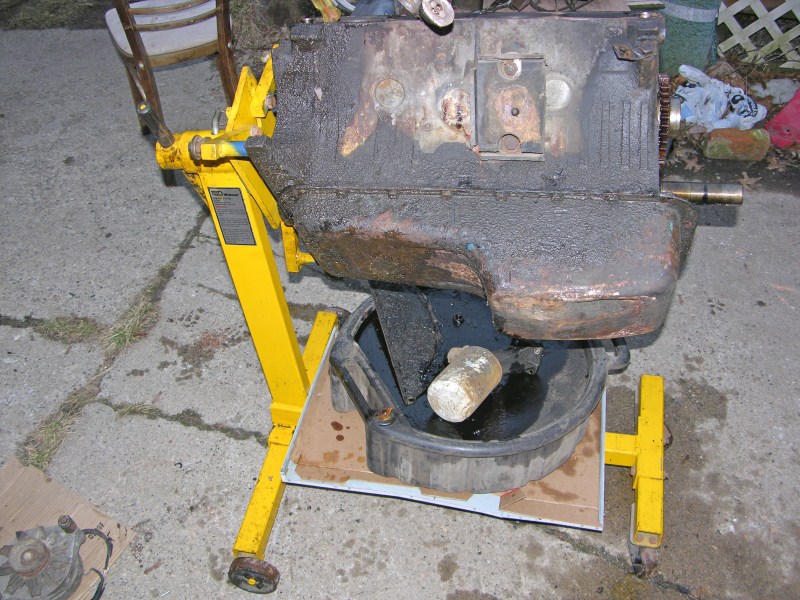 #1
#1Whenever possible, do yourself a favor and use an engine stand. It makes life so much easier.
 #1
#1
Whenever possible, do yourself a favor and use an engine stand.
It makes life so much easier.
FREEZE PLUG REMOVAL
(Ford #357167-S Plug, Cylinder Block Side - 6 cup type, 1-3/4"
diameter)
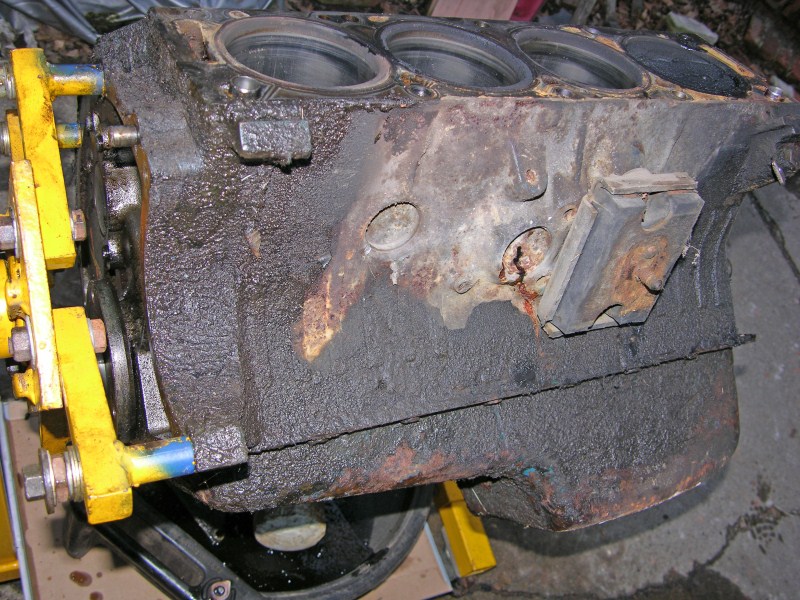 #2
#2
I wrongly call them Freeze plugs while others call them, Core Plugs, Welch
plugs, Expansion Plugs, or just plain 'Plugs'. These six holes were cast
in the sides of the block to let the core
sand pour out at the iron foundry. The engine plant properly
reamed the holes and inserted 1-3/4" plugs. This center
plug shows signs of a bad
leak.
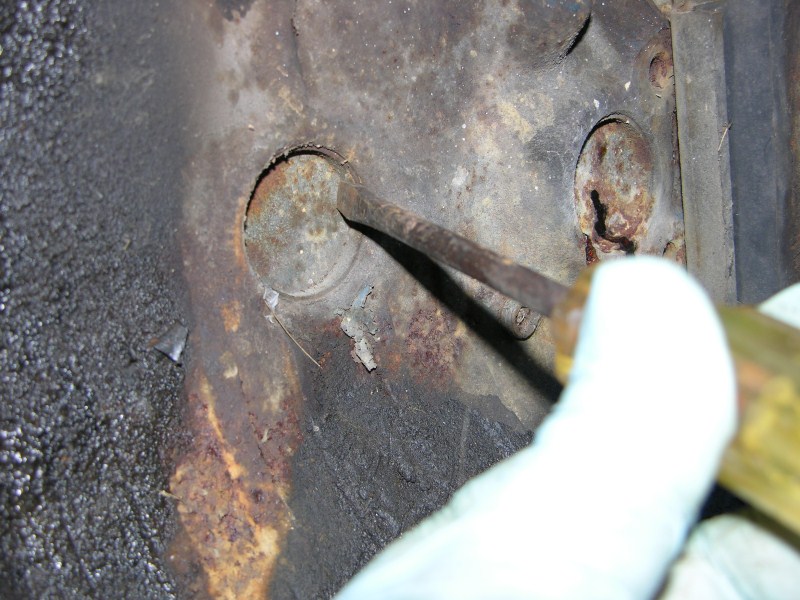 #3
#3
Use an old, dull
screwdriver and a hammer. I use a dull screwdriver because if
I need to pound the plug in by the lip, I won't have sharp tool edges to dig into the iron and cause a leak.
Normally, I just hit the plug here, and it should turn sideways.
If it drops in, reach in and pull it back out.
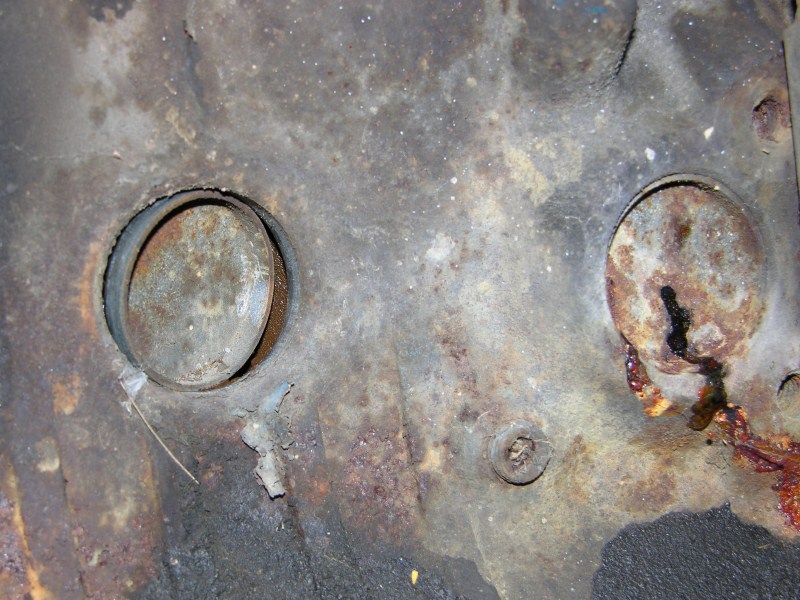 #4
#4
They usually turn sideways like this, then grab it with Channellocks
and pull it out.
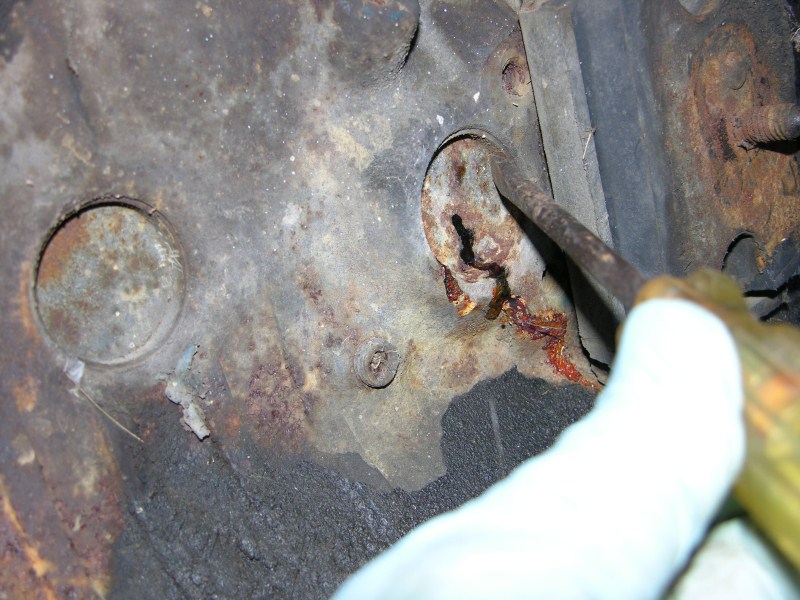 #5
#5
Same thing here. If the screwdriver pierces the steel, hit it on the edge of the flange.
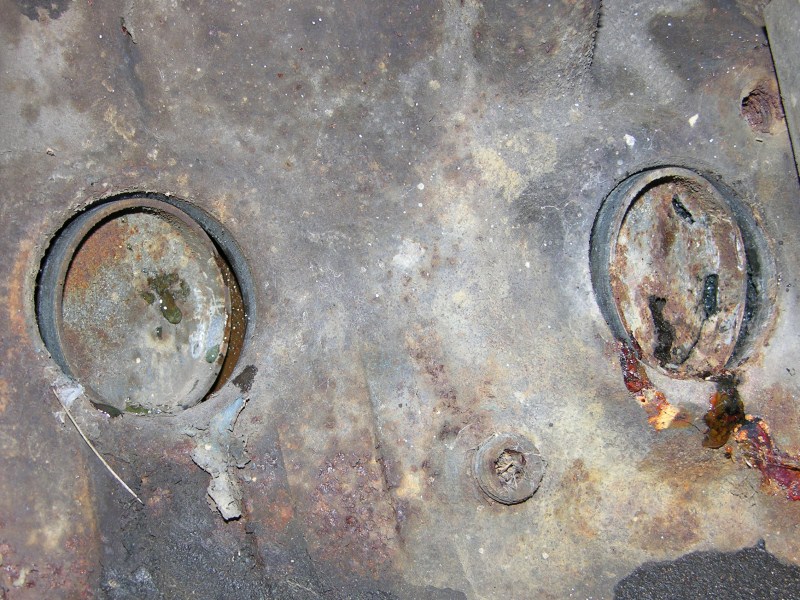
Sure enough, this plug is half eaten away by rust so I hit it on the edge.
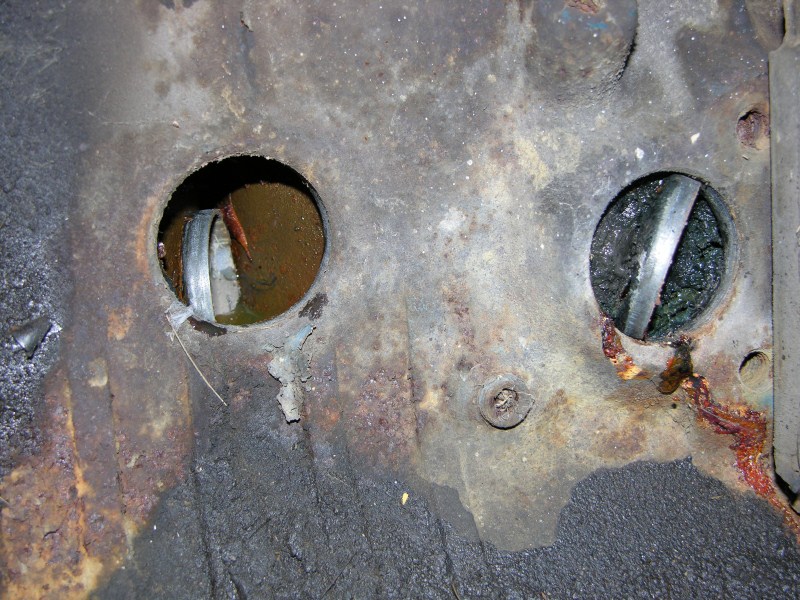
To illustrate, I poked this one in. It really can't go anywhere so reach in and pull it out with pliers.
Holy COW! Look at what's behind the RH plug! It's a
wall of MUD. I strongly suggest you change your antifreeze
with a good brand. Important additives in antifreeze
include, water pump lube and anti-corrosion protection.
This engine got regular oil changes but this evidence shows,
they never changed antifreeze.
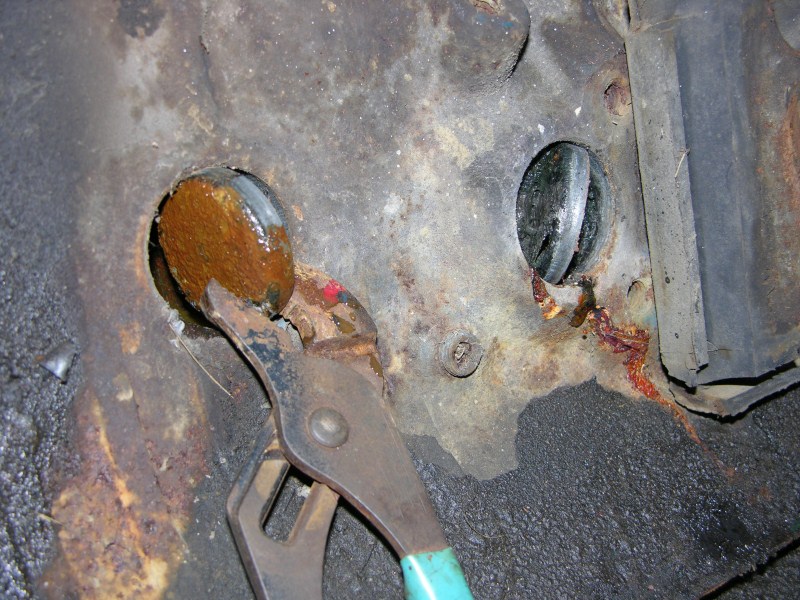 #8
#8
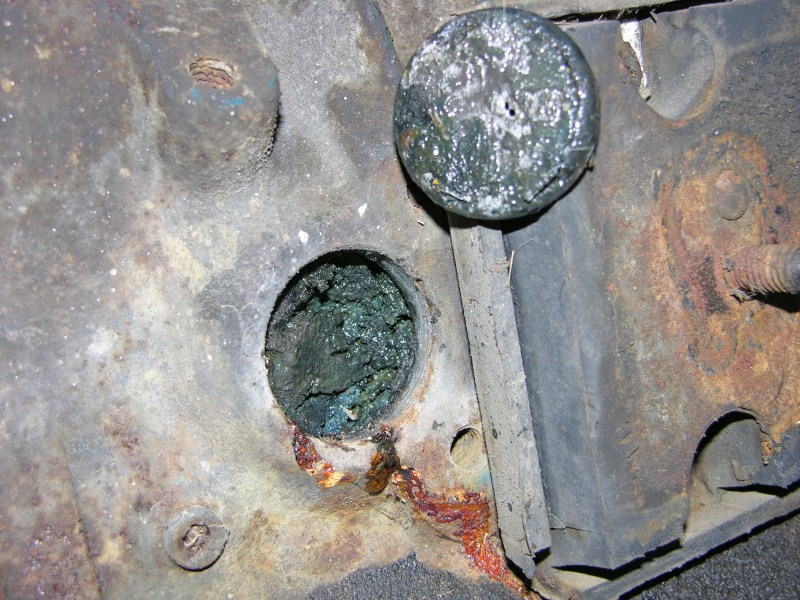 #9
#9
Packed.
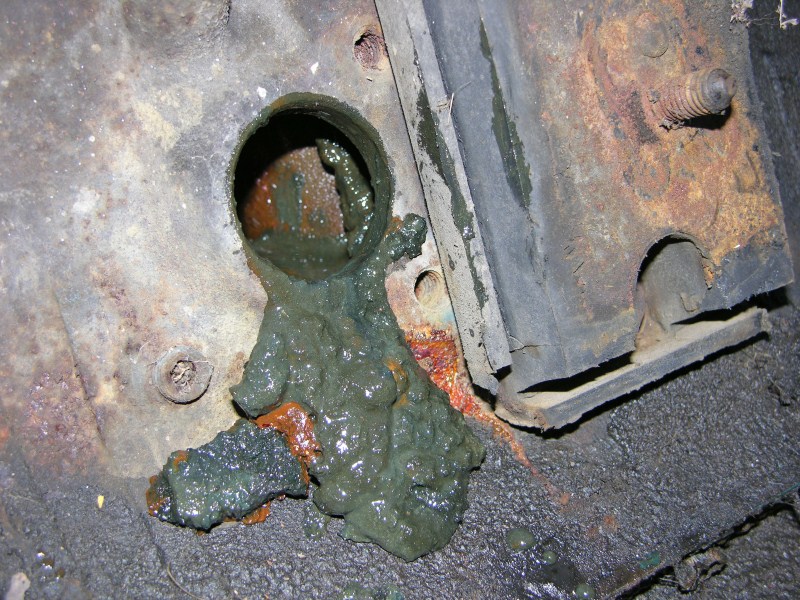 #10
#10
I just stuck my finger in and pulled this green crap out.
I will let the machine shop hot tank this block.
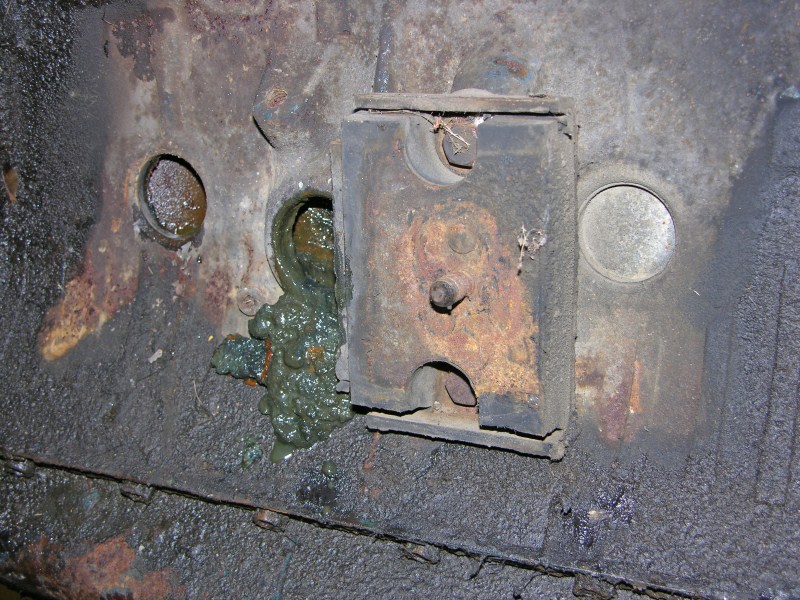 #11
#11
If your plugs are leaking or your engine overheats easily,
knock ALL your core plugs out, then use a garden hose and a coat hanger
to flush the water jackets clean. There isn't a chemical
that can do the same work. Give each cylinder a good
scraping around the bottoms of the water jackets with the
hanger. Be more careful around the tops because you don't
want to open the head gasket water holes. Then wrap a rag
around a hose and flush with full pressure.
Sometimes the motor mounts get in the way when trying to
access the Freeze Plugs. If so, do one side at a time.
Jack the engine up off the mount, unbolt the motor mount, and
pull all three plugs. Then, don a raincoat and flush.
Replace your plugs with BRASS.
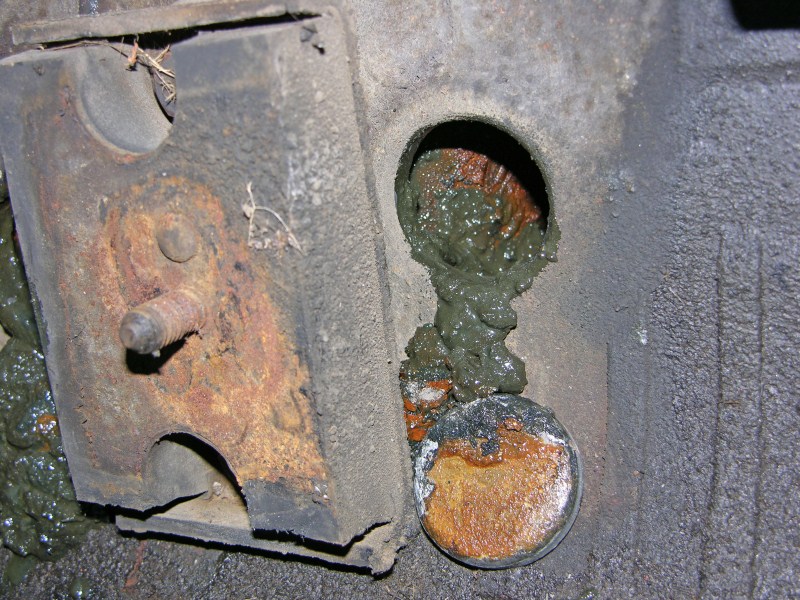 #12
#12
Same thing again...
Pull the Oil Pan off to access the Oil Pump and Crankshaft.
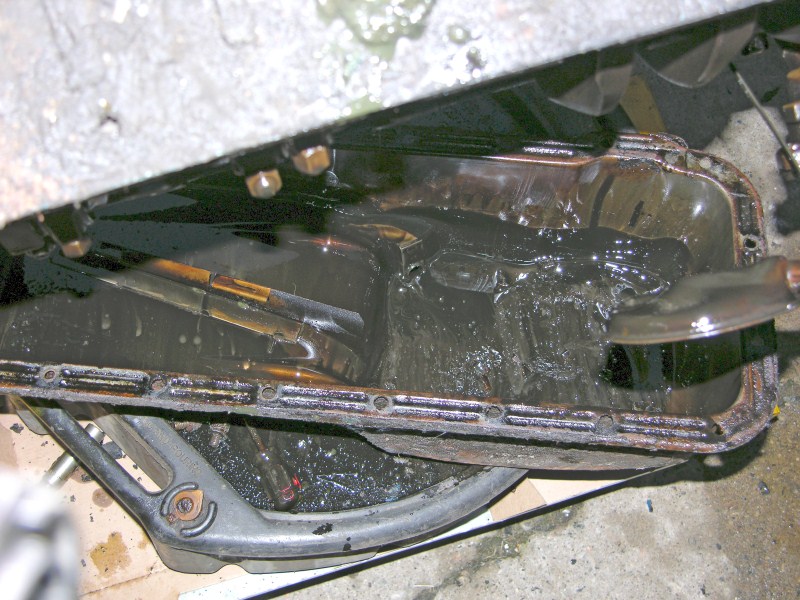 #13
#13
Not too much muck on the bottom, oil's a little dark and thick but it's also cold outside.
OIL PUMP REMOVAL
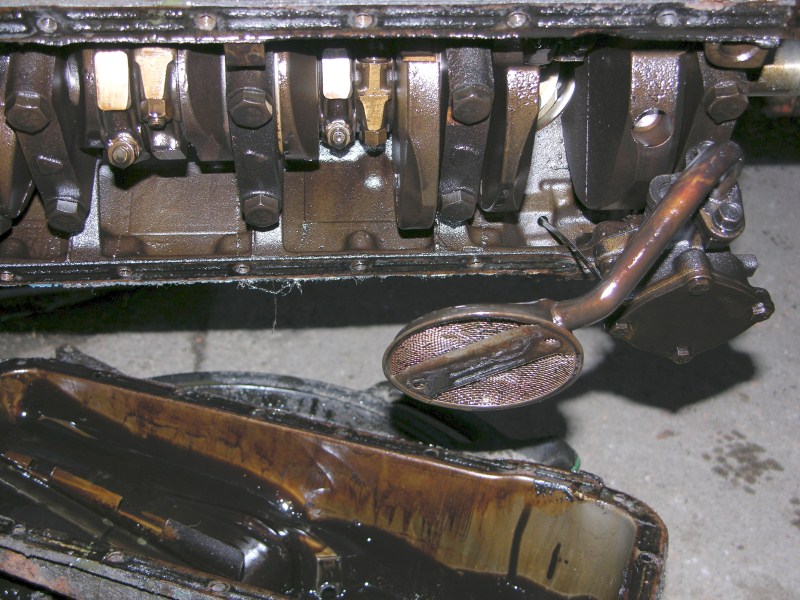 #14
#14
The pickup isn't blocked and the bottom end is typical for using detergent oil.
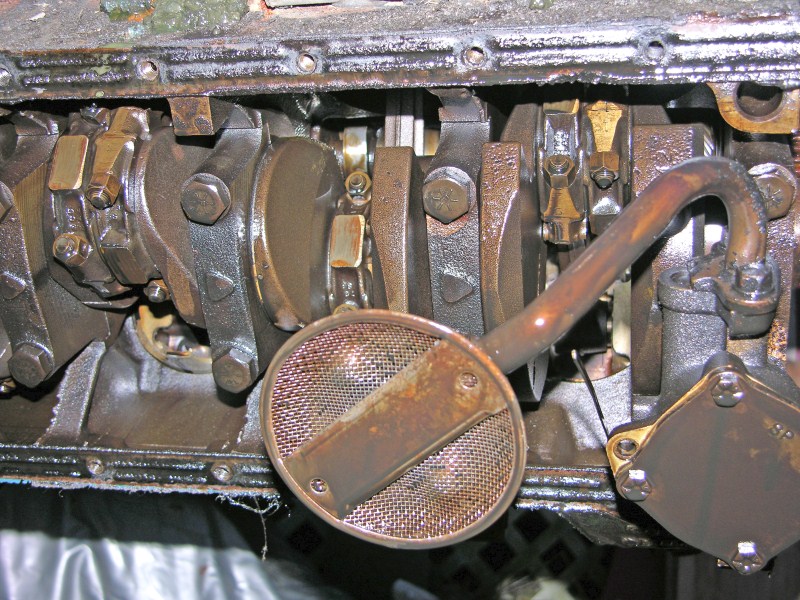 #15
#15
As a constructive sidetrack, let's pull the oil pump bottom plate off to see the rotors.
Normally, you wouldn't do this unless you buy the kit....
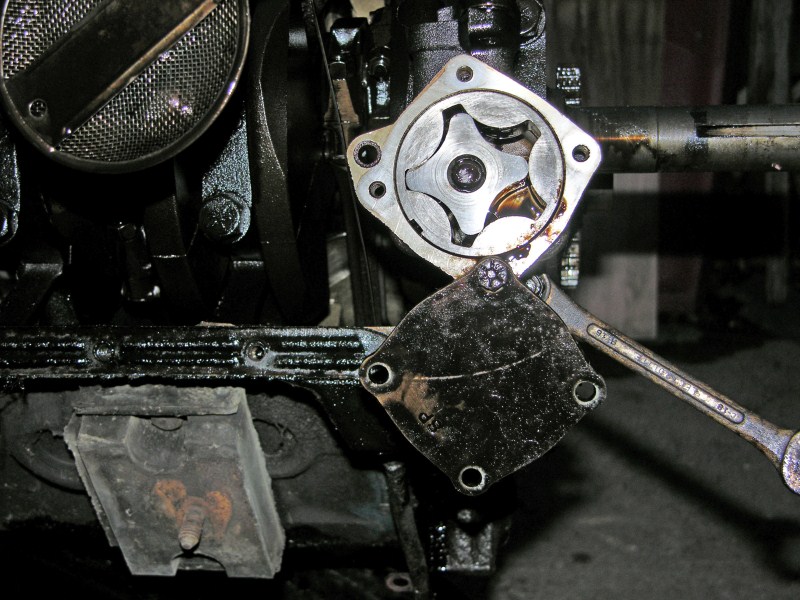 #16
#16
I would expect a lot worse from an engine this old.
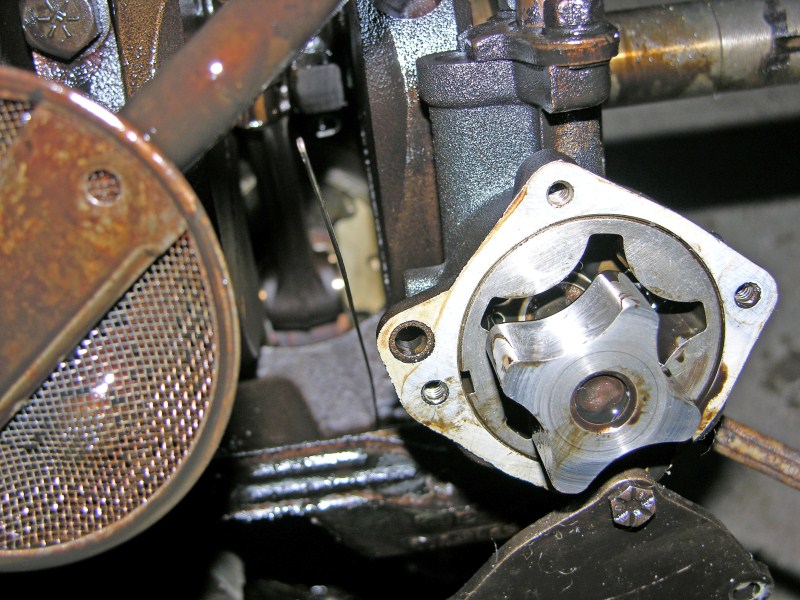 #17
#17
There are only two moving parts in an oil pump. Some Auto Parts
Stores carry these in a kit form, to save you money. (Why
buy the whole housing when all you need is the rotating parts?)
Once the bottom plate is removed, the mating rotors drop right
out.
Inspect the mating surfaces for score marks and excessive
clearance on the lands and bottom plate.
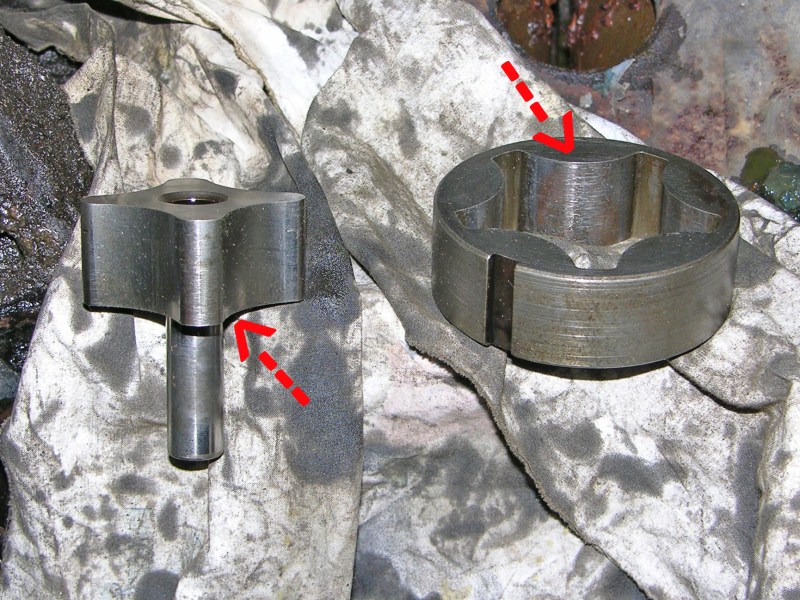 #18
#18
Wear can be measured with feeler gauges. I like to inspect for pieces of metal embedded in the rotors.
Remember, all oil passes through the pump BEFORE it gets filtered or bypassed.
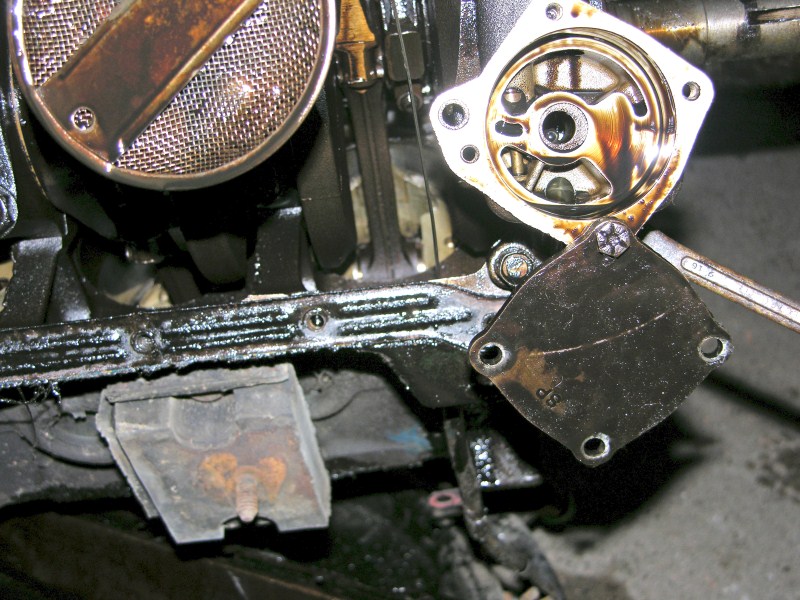 #19
#19
This is what the housing looks like.
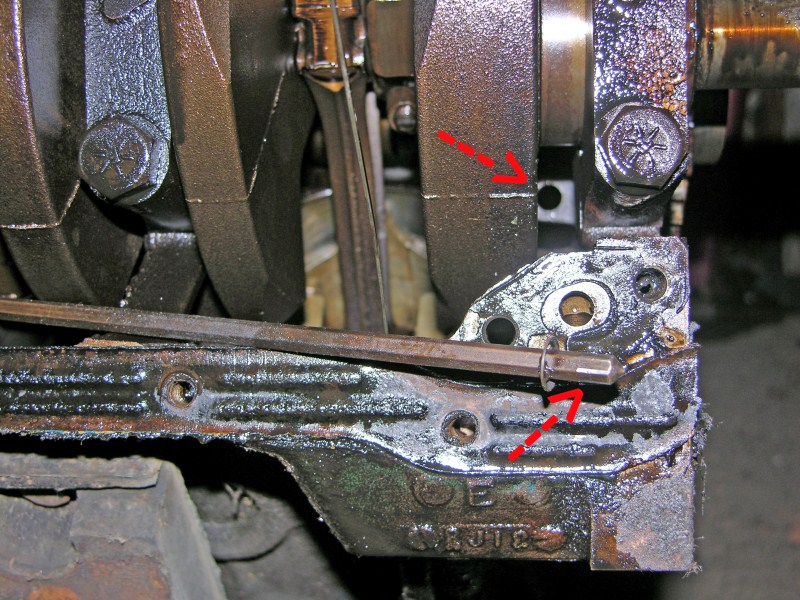 #20
#20
This Oil Pump Driveshaft goes in the above hole to the
distributor. Now that the pump is removed, notice how
large the gasket
hole size is compared to the drilled oil passage hole in the
block. This is typical of FE blocks. Before I'm
done, I will open the casting up to the gasket size as an
oil flow modification.
ENGINE MOUNT REMOVAL
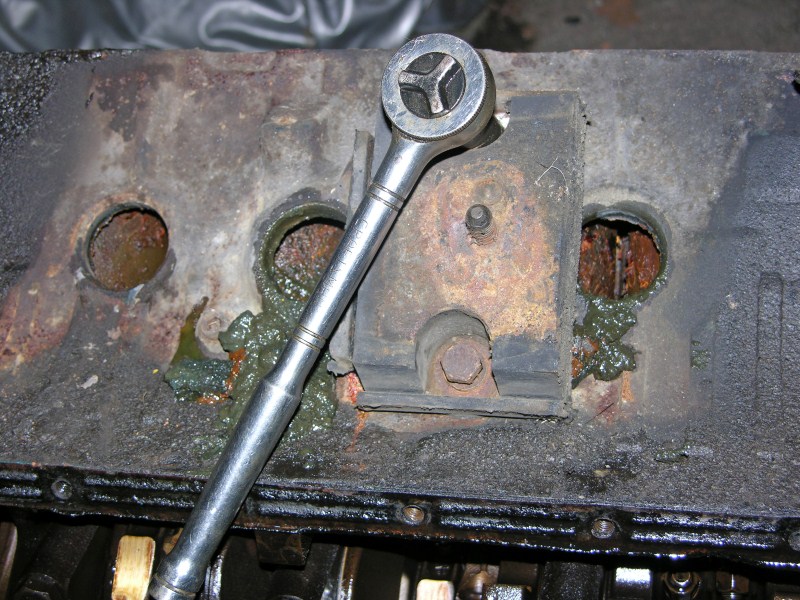 #21
#21
Removing engine mounts...
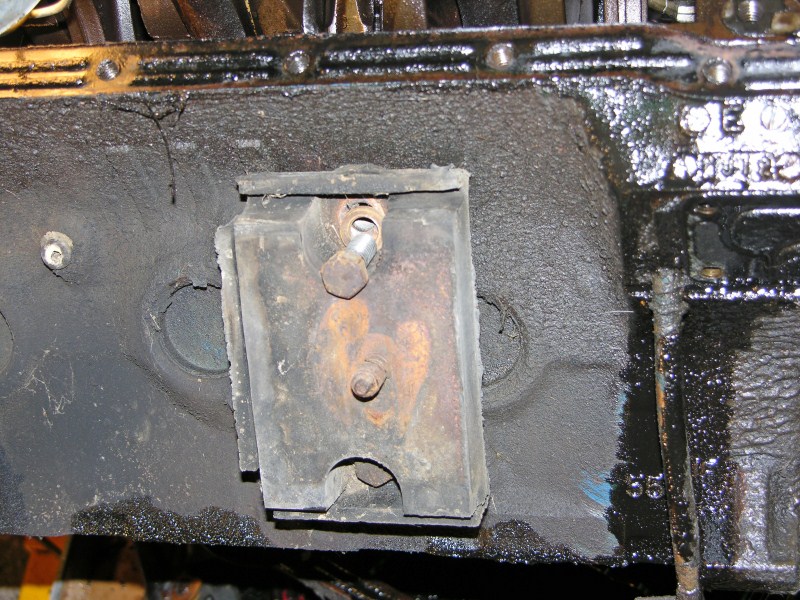 #22
#22
Both sides... Ok, the motor mount on this side DID cover the Freeze Plug.
(There's been complaints about how hard it is to change FE
Freeze Plugs while the engine is in the car.)
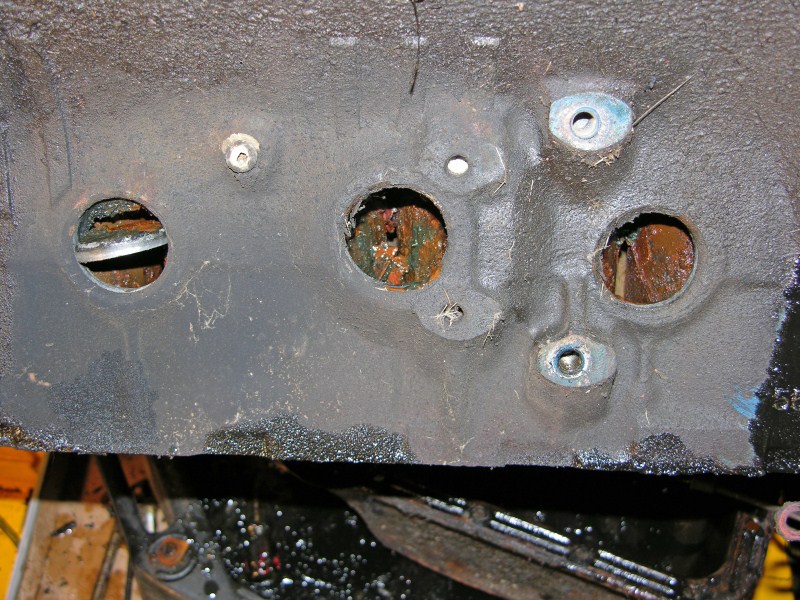 #23
#23
Same story on this side as well... it's full of mud.
DIPSTICK
TUBE REMOVAL
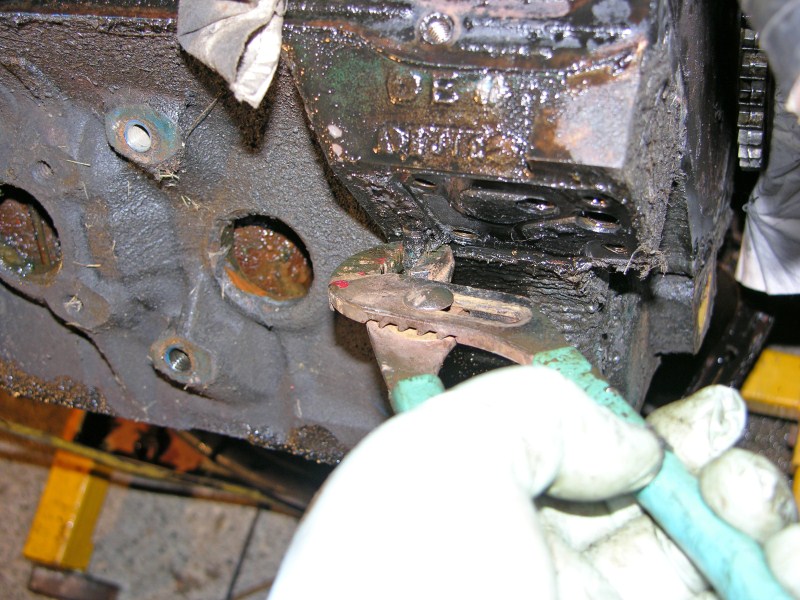 #24
#24
Dip Stick Tubes simply press in. To remove, grab with
pliers and tap the pliers with a hammer.
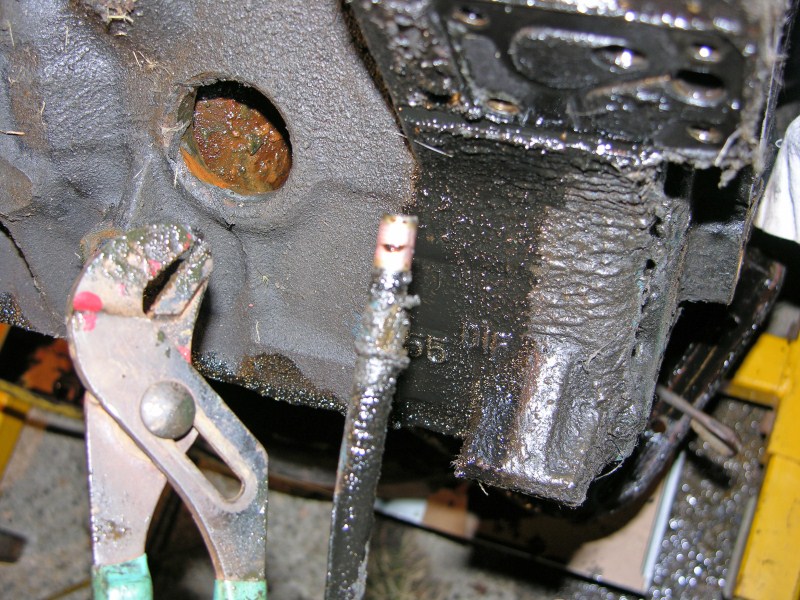 #25
#25
This is what the dipstick tube looks like. I grabbed
it just under the collar. The shiny part was pressed in
the block.
In the next site, I will ID the Main Journal Caps, and
Connecting Rods & Caps.
CLICK HERE for
TEARDOWN LOWER END 2
Top of Page
CLICK HERE
to return to Home Page